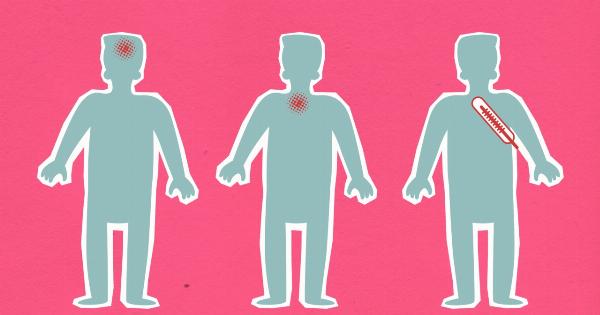Fibromyalgia is a chronic disorder characterized by widespread musculoskeletal pain, fatigue, and tenderness in specific areas of the body.
It is often accompanied by sleep disturbances, memory problems, mood changes, and other physical and psychological symptoms. Fibromyalgia affects an estimated 2-4% of the population, predominantly women. The exact cause of this condition is unknown, and there is no known cure.
Symptoms of Fibromyalgia
The symptoms of fibromyalgia can vary from person to person, but the most common ones include:.
- Widespread pain: The pain associated with fibromyalgia is often described as a constant dull ache that has lasted for at least three months. It typically occurs on both sides of the body and above and below the waist.
- Fatigue: People with fibromyalgia often wake up feeling tired, even after a full night’s sleep. This is because the disorder disrupts the deep, restorative stage of sleep.
- Tender points: These are specific points on the body that are painful to touch. They are usually located in the neck, shoulders, back, hips, arms, and legs.
- Sleep disturbances: Fibromyalgia often leads to sleep disorders such as insomnia, sleep apnea, or restless leg syndrome.
- Brain fog: Many individuals with fibromyalgia experience difficulties with concentration, memory, and thinking clearly. This is commonly referred to as “fibro fog.”
- Headaches: Chronic headaches or migraines are a common symptom of fibromyalgia.
- Depression and anxiety: Fibromyalgia is often associated with mental health conditions, including depression and anxiety.
Diagnosing Fibromyalgia
Diagnosing fibromyalgia can be challenging as there are no specific tests that can definitively confirm its presence. Instead, doctors rely on a combination of medical history, physical examination, and the presence of certain symptoms.
The American College of Rheumatology has established criteria for diagnosing fibromyalgia, which include widespread pain lasting for at least three months and the presence of pain in at least 11 of the 18 designated tender points.
However, this criteria is not always followed, and some physicians diagnose fibromyalgia based on symptoms alone.
Treatment Options for Fibromyalgia
Fibromyalgia cannot be cured, but there are various treatment options available to help manage the symptoms and improve quality of life. These include:.
- Medications: Pain relievers, antidepressants, and anti-seizure drugs are commonly prescribed to help reduce pain, improve sleep, and address other symptoms.
- Physical therapy: Gentle exercises, stretches, and massages can help relieve muscle pain, improve flexibility, and enhance overall strength.
- Psychological support: Cognitive behavioral therapy (CBT) and counseling can assist individuals in managing the emotional and psychological aspects of fibromyalgia.
- Lifestyle changes: Regular exercise, stress management techniques, and healthy sleep habits can contribute to better symptom management.
- Alternative therapies: Some individuals find relief through acupuncture, yoga, herbal supplements, and other complementary and alternative therapies.
Living with Fibromyalgia
Living with fibromyalgia can be challenging, but there are strategies that can help individuals cope with the condition:.
- Education: Learning about fibromyalgia, its symptoms, and available treatment options can empower individuals to actively participate in their own care.
- Self-care: Prioritizing self-care activities such as practicing good sleep hygiene, managing stress, and engaging in activities that bring joy and relaxation can help improve overall well-being.
- Support: Joining support groups or seeking the assistance of mental health professionals can provide emotional support and a network of individuals who understand the challenges of living with fibromyalgia.
- Maintaining a healthy lifestyle: Eating a nutritious diet, engaging in regular physical activity (in consultation with a healthcare professional), and avoiding triggers such as certain foods or excessive physical activity can contribute to better symptom management.
The Future of Fibromyalgia
Research and medical advancements are continuously improving our understanding of fibromyalgia. As scientists uncover more about the underlying mechanisms and causes of the condition, new treatment approaches may emerge.
Additionally, ongoing research is focused on identifying potential biomarkers and developing more accurate diagnostic tools for fibromyalgia. Despite the challenges, there is hope for a future with better symptom management and perhaps even a cure for fibromyalgia.































